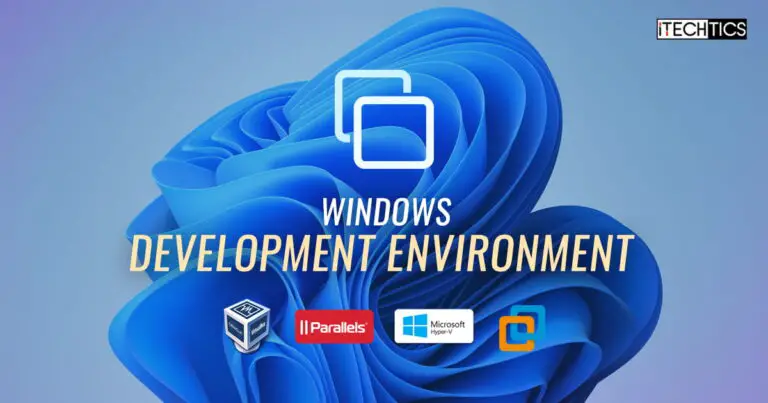Microsoft publishes new ready-to-install virtual machines (VMs) at the end of each month. These VMs are directed toward the developers with pre-installed developer tools and configurations, and therefore, Microsoft calls these VMs “Windows Development Environments.”
At the time of writing this post, Microsoft had recently published new Windows 11 VMs that include Patch Tuesday updates for September 2023. These are valid for 90 days only, which means that these Development Environments will be valid till December 19, 2023. Note that these VMs cannot be activated with product keys.
The Windows Development Environments are released at the end of each month so that the features and improvements from the last Patch Tuesday update can be included. You can download and install the virtual machines directly from Microsoft which you can then deploy on the following hypervisors:
These hypervisors support different formats of virtual machines. Here are the details of the supported formats:
| Hypervisor | Supported VM format |
|---|---|
| Hyper-V | VHD, VHDX |
| VirtualBox | VDI, VHD, VMDK |
| VMWare Workstation | VMDK |
| Parallels | VDI, VHD, VMDK |
Table of Contents
Preinstalled tools in Windows Development Environment
Since these VMs are intended purely for development and testing purposes, they come prepacked with a few tools so that you will not have to create a VM from scratch and then install the tools yourself. Here is a list of the included software and enabled features:
- Window 11 Enterprise (Evaluation)
- Visual Studio 2022 with the UWP, .NET Desktop, Azure, and Windows App SDK for C# workloads enabled
- Windows Subsystem for Linux enabled with Ubuntu installed
- Developer mode enabled
- Windows Terminal installed
Requirements for Windows Development Environment
Like all operating systems, the Windows Development Environment also has minimum requirements that your system must match so you can install it. These are the requirements for the Windows 11 Development Environment:
- At least 70 GB of space
- At least 8 GB RAM
- Virtualization enabled
If your PC matches these requirements, then you can download and install the VMs.
Download Windows Development Environment
Here are the steps to download the latest Windows 11 Development Environments (VMs):
-
Open the Microsoft Developer website using any web browser.
-
Click on the hypervisor name for which you want to download the VM.

Select the hypervisor to download Windows Development Environment
The VM will then immediately begin downloading. When it finishes, you can now create a new VM in the selected hypervisor.
Set up Windows Development Environment in Hyper-V
Once you have downloaded the respective VM, you can use it to create and set up the VM on the appropriate hypervisor. Here are the steps to use the downloaded file to set up the VM in Hyper-V:
-
Start by extracting the contents of the downloaded VM.
-
Launch the Hyper-V Manager.
-
Right-click on the computer name in the left pane, expand New, and then click “Virtual Machine.”

Create new VM The New Virtual Machine Wizard will now launch.
-
Click Next.

Click Next 5 -
On the next screen, specify a name for the VM and click Next.

Specify a VM name -
Now select “Generation 2” as the VM generation and click Next.

Select Generation 2 VM Note: You cannot use “Generation 1” since the VM is already configured for Generation 2.
-
Now specify the RAM you want to assign to the VM and click Next.

Specify RAM -
Now select a virtual switch for the VM with internet connectivity and click Next.
Note: This VM will need internet connectivity to install updates and renew the expiration date after installation.

Specify virtual switch -
Select “Use an existing virtual hard disk,” and now specify the Virtual Hard Disk (VHD) file that you have downloaded and extracted from the Microsoft Developers website. Click Next when done.

Select VHD -
On the final screen, click Finish.
The VM will now be deployed
-
Before starting the VM, right-click it, click Settings, go to the Security tab, and enable both “Secure Boot” and “Trusted Platform Module.”
You can apply the same methodology and provide a pre-configured VHD for a VM for the other hypervisors as well, which includes VMware Workstation, Oracle VirtualBox, and Parallels.
Ending words
Windows pre-configured Development Environments are a time-saver for the developers. Everything needed to begin any testing or development is already there, and a user does not need to spend the time installing the OS in the first place. Additionally, they can perform clean installations with the provided VMs that already include the latest security patches.
If you are looking for an isolated development/testing environment for a few days, you can create a free VM in a few minutes.






